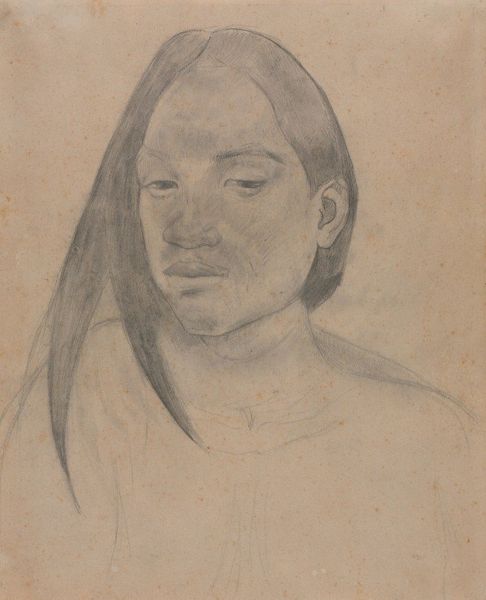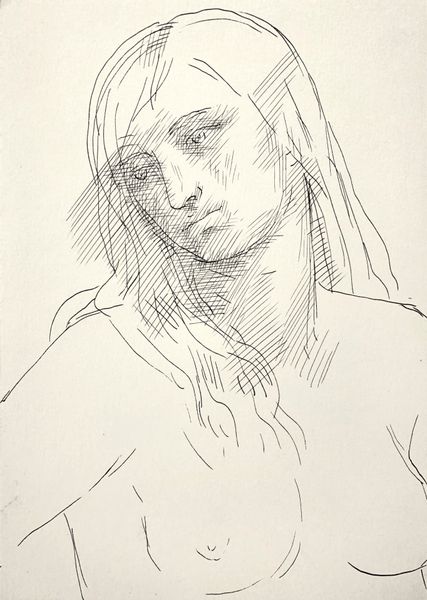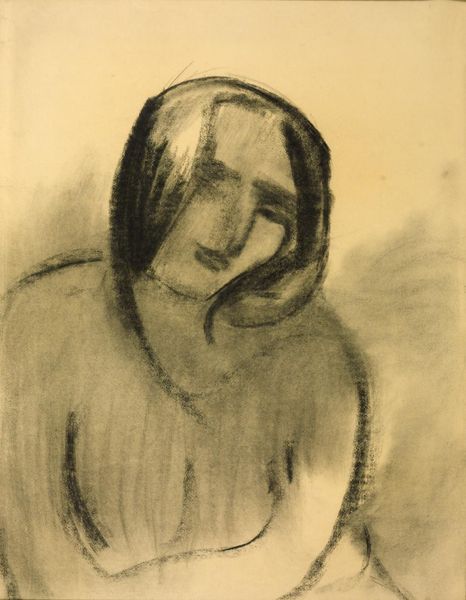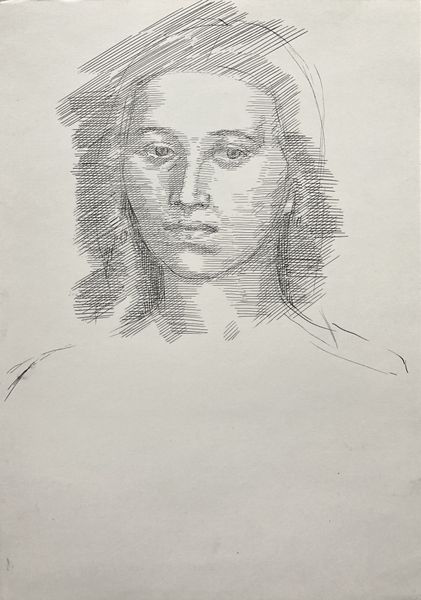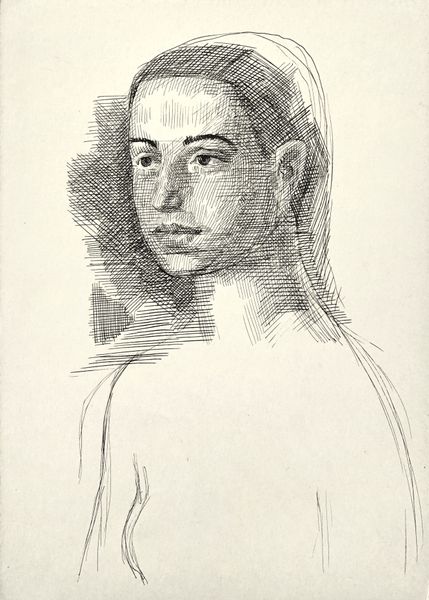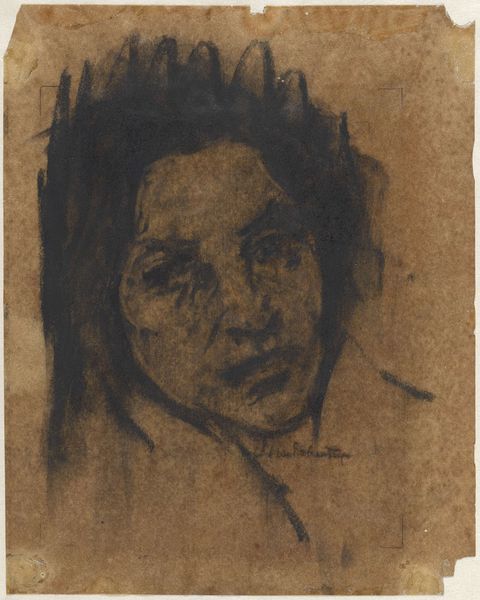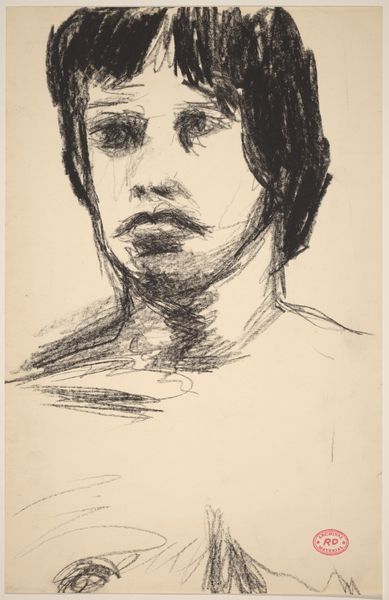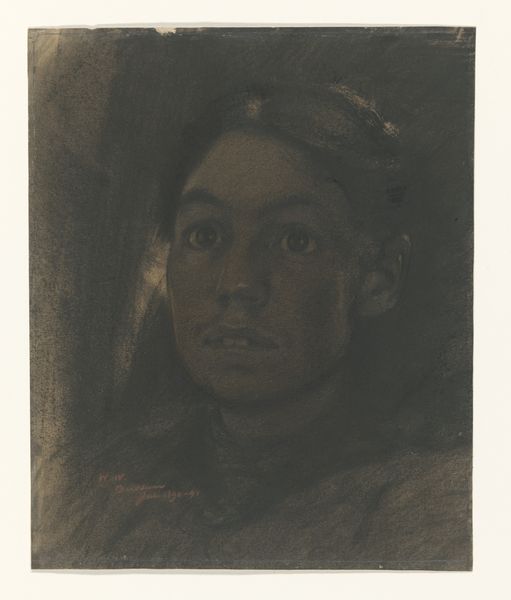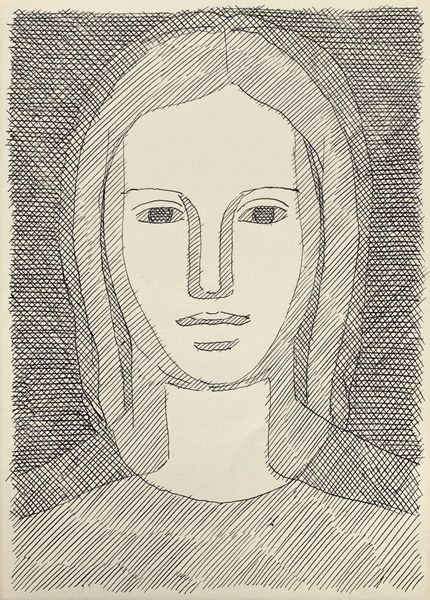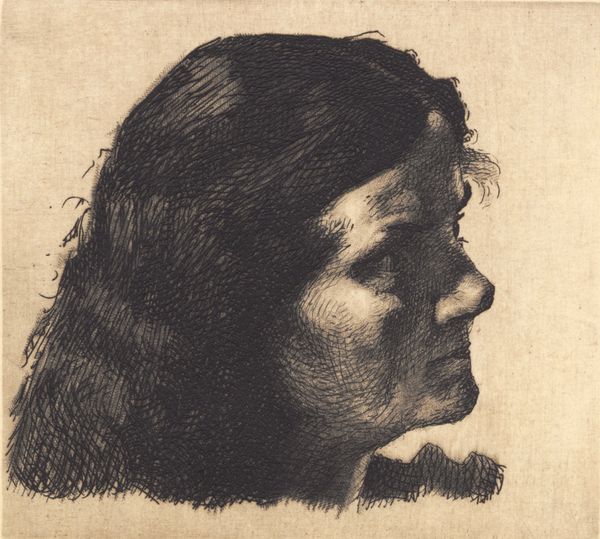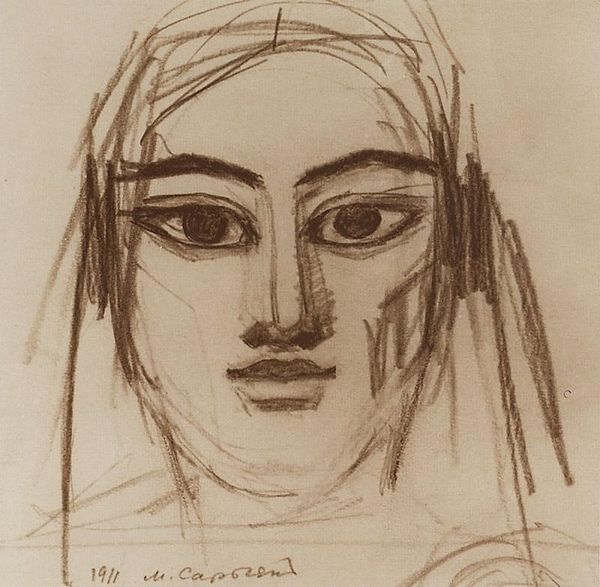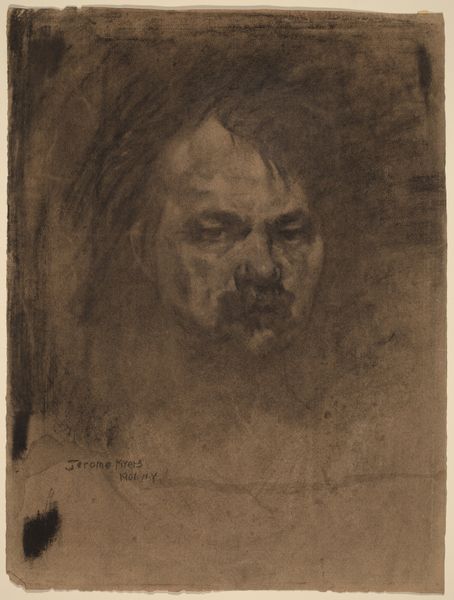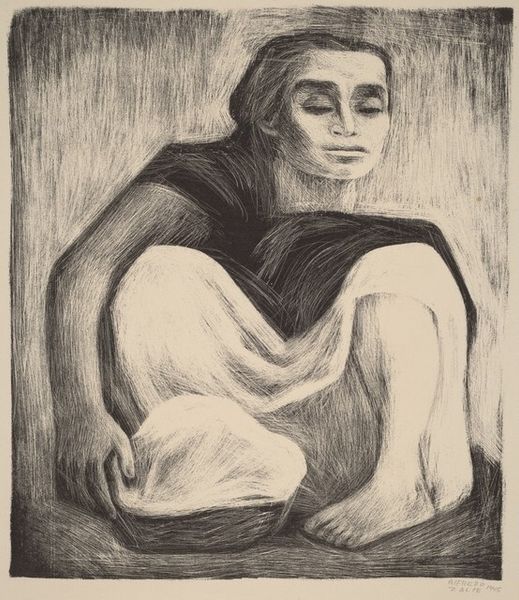
drawing, paper, pencil, charcoal
#
portrait
#
drawing
#
charcoal drawing
#
paper
#
pencil drawing
#
pencil
#
charcoal
#
post-impressionism
Dimensions: 413 × 325 mm
Copyright: Public Domain
Editor: This is Paul Gauguin's "Portrait of Tehamana," created between 1891 and 1893, using charcoal and pencil on paper. It feels surprisingly modern. What stands out to you? Curator: I’m immediately drawn to the materials used and the social context. Charcoal and paper: readily available, portable, inexpensive. This isn’t oil paint commissioned by a wealthy patron. This is about accessibility, a democratisation of image-making. Consider also, Gauguin’s own motivations and relationship with Tahiti. To what extent is this a portrait and to what extent is it an ethnographic study for a European audience hungry for images of "exotic" cultures? Editor: That's a provocative idea. I hadn't thought about the accessibility of the medium influencing its message. Is it fair to suggest the artwork reduces Tehamana to a mere commodity? Curator: Perhaps 'commodity' is too simplistic. Look at the mark-making. Gauguin doesn't shy away from depicting the individual – the firmness of her gaze, the set of her mouth. But consider how his material choices, the quick, gestural nature of charcoal, reflect a broader trend of artistic appropriation, perhaps even exploitation, within a colonial framework. Are we truly seeing Tehamana or a European construction *of* Tehamana? Editor: So, the ease of production and distribution could contribute to the objectification? Curator: Precisely. The charcoal makes reproduction easy; images like this can be circulated widely, turning an individual into a type, reinforcing pre-conceived notions and power imbalances. It's all intertwined: the materials, the process, and the social dynamics. Editor: I've definitely gained a new perspective, viewing the piece through the lens of materiality and power dynamics makes you think beyond the aesthetic appeal. Curator: Absolutely. And that is precisely the goal; we cannot view any art outside of the system that allows for its very creation.
Comments
No comments
Be the first to comment and join the conversation on the ultimate creative platform.
